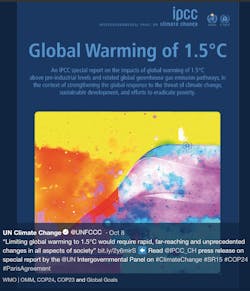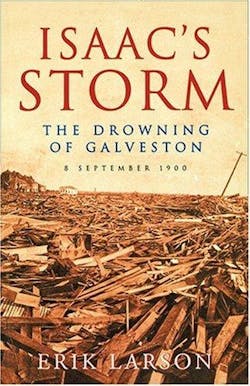Editor's Note: Giving Thanks for... Science!
This is my 14th editorial as editor of HPAC Engineering. It is the fifth that I have had to write in the wake of yet another mass shooting of 10 or more Americans in these United States.
Now, most of you may see no connection between the two, but believe me, as a citizen of this planet, a husband, father, son and brother, I try to bring my whole person to bear on these little monthly pep talks to readers and myself. But some months are more difficult than others.
That being said, November is the month of Thanksgiving. So, let us all give thanks.
And specifically, let us give thanks for... Science!
Why Science?
Well, let’s think about that. Science is driving virtually everything HVACR professionals do these days, and actually always has. As the elements fluctuate wildly around our built environment, you continue to strive to control indoor air quality and temperatures to provide comfort and promote productivity. And all of that now comes with a heightened interest in energy efficiency, sustainability and resilience.
With all that in mind, this issue will be distributed at Greenbuild 2018 in Chicago this month, where more than 20,000 of your colleagues will convene to discuss the latest scientific advances influencing their practices and redesigning their products to fit new needs. Toward that end, I encourage you to read contributor Kelly Faloon’s article previewing the show, and also review our selection of Green Products that will be among the many featured on the exhibit floor this year. One green-minded manufacturer, Armstrong Fluid Technology, even shares with us the evolution behind its own ‘sustainability journey’.
Of course, this all will take place against the backdrop of the United Nations’ urgent new report on the accelerating global effects of climate change, released just last month and summarized in this issue.
Our sustainability expert, Larry Clark, weighs in to underscore that the scientists behind the research now believe 2030 may be the make-or-break year for our species in addressing climate change. Adds one of the lead researchers, “It’s a line in the sand and what it says to our species is that this is the moment, and we must act now.”
Dire language, to be sure, but we ignore such warnings at our peril.
Indeed, I am reminded of historian Erik Larson’s compelling book Isaac’s Storm, a searing study of the maddening days leading up to the 1900 hurricane that destroyed Galveston TX and killed thousands. There were numerous warnings then, too, but the powers that be failed to heed them.
Today, we hear the alarm bells once again, backed by voluminous evidence and detailed descriptions of what negative consequences await. But many of us still hesitate to accept the science. Why?
This month, let’s all renew our appreciation for the math and science skills that have prepared us for our careers in this industry. We trusted them to bring us to where we are today. We should now also trust them to take us where we need to be tomorrow.


